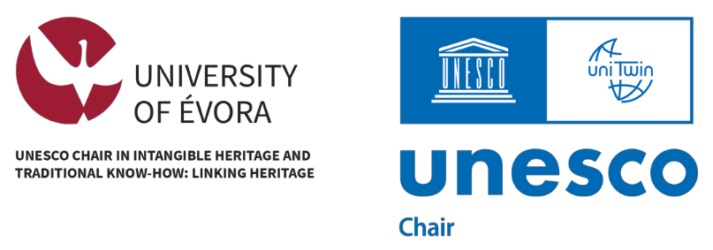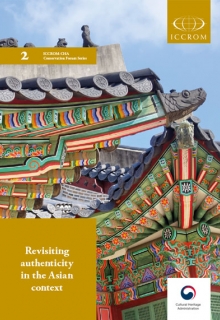
Revisiting Authenticity in the Asian Context
“For cultural heritage practitioners and managers,
This publication is the result of a Forum series organized by ICCROM together with, and thanks to the generosity of, the Cultural Heritage Administration of the Republic of Korea.”
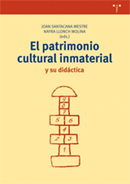
El patrimonio cultural inmaterial y su didáctica
Santacana Mestre, Joan y Lllonch Molina, Nayra (eds.), 2016, El patrimonio cultural inmaterial y su didáctica, Colección: Biblioteconomía y Administración Cultural, Trea, Cenero/Gijón, ISBN: 978-84-9704-899-6
Apresentação por Ana Carvalho no blogue No Mundo dos Museus:
«“El Patrimonio Cultural Inmaterial y su Didáctica” acaba de ser publicado em Espanha pelas edições Trea. O livro tem em conta o enquadramento da Convenção para a Salvaguarda do Património Cultural Imaterial (UNESCO, 2003) para reflectir sobre vários temas: o conceito de património imaterial; o que se inclui e o que se exclui; a aparente perda de diversidade cultural por via da globalização; a artificialidade das listas de património imaterial da UNESCO; a instrumentalização política subjacente às candidaturas da UNESCO; os mecanismos de inclusão e exclusão cultural; entre outros. Muitos são os exemplos (mais internacionais do que espanhóis) que são dados ao longo do livro para sustentar os argumentos apresentados. Mais do que respostas, os autores fazem um levantamento de problemáticas em torno do património imaterial. (…)»
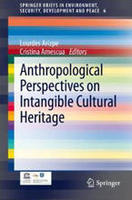
Anthropological Perspectives on Intangible Cultural Heritage
Arizpe, Lourdes and Amescua, Cristina (eds.), 2013, Anthropological Perspectives on Intangible Cultural Heritage, Springer, 145 p.
A decade after the approval of the UNESCO 2003 Convention for the Safeguarding of Intangible Cultural Heritage (ICH), the concept has gained wide acceptance at the local, national and international levels. Communities are recognizing and celebrating their Intangible Heritage; governments are devoting important efforts to the construction of national inventories; and anthropologists and professionals from different disciplines are forming a new field of study.
The ten chapters of this book include the peer-reviewed papers of the First Planning Meeting of the International Social Science Council’s Commission on Research on ICH, which was held at the Centro Regional de Investigaciones Multidisciplinarias (UNAM) in Cuernavaca, Mexico in 2012. The papers are based on fieldwork and direct involvement in assessing and reconceptualizing the outcomes of the UNESCO Convention. The report in Appendix 1 highlights the main points raised during the sessions.
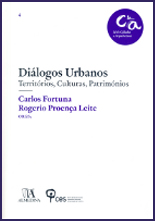
Diálogos Urbanos: Territórios, Culturas, Patrimónios (in Portuguese)
Fortuna, Carlos e Proença Leite, Rogério (Orgs.) (2013) Diálogos Urbanos: Territórios, Culturas, Patrimónios; Almedina, Coleção CES, 366 págs.
«Diálogos Urbanos é um livro sobre proximidades e distâncias entre e dentro das cidades. Escrito com um olhar crítico, o livro enfrenta o desafio duplo de revelar aquilo que estas proximidades e distâncias mostram e aquilo que tornam invisível ou escondem. Diálogos Urbanos põe as cidades a falar de si, com outras, e a desvendar algumas das ressignificações que atingem os seus territórios, as suas expressões de cultura e os seus patrimónios.
São diálogos tecidos em português, porque é essa língua que aproxima e distancia as cidades portuguesas e brasileiras estudadas. Aqui, o Porto e S. Paulo; além o castiço Bairro Alto e o paulistano Bairro da Luz; mais além, as Praças da Sé (de Lisboa e de São Paulo). Acolá, Coimbra dialoga com Fortaleza, como fazem também, uma com a outra, as investidas modernas do Parque das Nações e da Faria Lima, ou o Santo António de Lisboa e o seu homónimo amazónico, ou ainda o samba e o fado patrimonializados… Tudo tão próximo e tão familiar… Ao mesmo tempo, tudo tão estranho e tão distante…»
Secção II (Expressões de Cultura) e Secção III (Patrimónios em Diálogo) do livro abordam aspetos do património imaterial e da sua interligação com o património material.
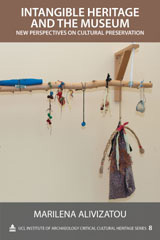
Intangible Heritage and the Museum: New Perspectives on Cultural Preservation
Alivizatou, Marilena (2012), Intangible Heritage and the Museum, Left Coast Press, 225 pp.
In this comparative, international study Marilena Alivizatou investigates the relationship between museums and the new concept of “intangible heritage.” She charts the rise of intangible heritage within the global sphere of UN cultural policy and explores its implications both in terms of international politics and with regard to museological practice and critical theory. Using a grounded ethnographic methodology, Alivizatou examines intangible heritage in the local complexities of museum and heritage work in Oceania, the Americas and Europe. This multi-sited, cross-cultural approach highlights key challenges currently faced by cultural institutions worldwide in understanding and presenting this form of heritage. [Source: website of the publisher]
Reviews:
Rui Su (2013): Intangible heritage and the museum: new perspectives on cultural preservation, Journal of Tourism and Cultural Change, Volume 11, Issue 1-2, 2013, DOI: 10.1080/14766825.2012.753741
Ana Carvalho (2013): «Marilena Alivizatou – Intangible heritage and the museum: new perspectives on cultural preservation», MIDAS [Online], 2 | 2013, http://midas.revues.org/317
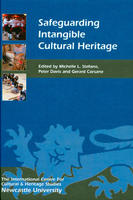
Safeguarding Intangible Cultural Heritage
Stefano, M. L., Davis, P., Corsane, G. (2012) Safeguarding Intangible Cultural Heritage, Bydell & Brewer, 285 pp
Awareness of the significance of intangible cultural heritage (ICH) has recently grown, due to the promotional efforts of UNESCO and itsConvention for the Safeguarding of the Intangible Cultural Heritage (2003). However, the increased recognition of intangible heritage has brought to light its undervalued status within the museum and heritage sector, and raised questions about safeguarding efforts, ownership, protective legal frameworks, authenticity and how global initiatives can be implemented at a local level, where most ICH is located.
This book provides a variety of international perspectives on these issues, exploring how holistic and integrated approaches to safeguarding ICH offer an opportunity to move beyond the rhetoric of UNESCO; in partiular, the authors demonstrate that the alternative methods and attitudes that frequently exist at a local level can be the most effective way of safeguarding ICH. Perspectives are presented both from “established voices”, of scholars and practitioners, and from “new voices”, those of indigenous and local communities, where intangible heritage lives. It will be an important resource for students of museum and heritage studies, anthropology, folk studies, the performing arts, intellectual property law and politics.
Michelle Stefano is Folklorist-in-Residence, University of Maryland Baltimore County; Peter Davis is Professor of Museology, International Centre for Cultural and Heritage Studies, Newcastle University; Gerard Corsane is Senior Lecturer in Heritage, Museum and Galley Studies, International Centre for Cultural and Heritage Studies.
Review:
Paul Belford in The Historic Environment, Vol. 4, Nº 1, April 2013
The appearance of this volume is extremely timely: it provides an essential examination both of the concept [of ICH] and its application in a wide range of scenarios.
read more
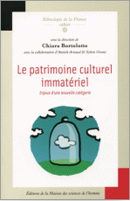
Le patrimoine culturel immatériel. Enjeux d’une nouvelle catégorie
Chiara Bortolotto (dir.), Le patrimoine culturel immatériel. Enjeux d’une nouvelle catégorie, Maison des Sciences de l’Homme, 2011, ISBN : 9782735114177.
Présentation de l’éditeur:
Qu’est-ce que le patrimoine culturel immatériel ? Pourquoi inventer une nouvelle catégorie de patrimoine dans un monde déjà obsédé par la conservation des traces du passé ? Peut-on protéger des expressions culturelles vivantes sans les figer ? À qui revient la charge de le faire ? À qui appartient ce patrimoine ?
À travers une analyse des politiques culturelles récemment engagées par les États à la suite de la Convention de l’Unesco pour la sauvegarde du patrimoine culturel immatériel (2003), cet ouvrage propose des premières réponses à ces questions. (…)
Publication commentée pour Jean-François Blanchard, «Chiara Bortolotto, Le patrimoine culturel immatériel. Enjeux d’une nouvelle catégorie», Lectures [En ligne], Les comptes rendus, 2012, mis en ligne le 23 janvier 2012
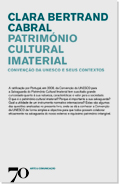
Património Cultural Imaterial – Convenção da Unesco e Seus Contextos (in Portuguese)
Bertrand Cabral, Clara (2011),Património Cultural Imaterial – Convenção da Unesco e Seus Contextos, Edições 70, Coleção “Arte & Comunicação” Nº. 98, 336 pp.
A ratificação por Portugal, em 2008, da Convenção da UNESCO para a Salvaguarda do Património Cultural Imaterial tem suscitado grande curiosidade quanto à sua natureza, características e valor para a sociedade.
O que é o património cultural imaterial? Porque é importante a sua salvaguarda?
Qual a utilidade de um instrumento normativo internacional?
Estas são algumas das questões analisadas no presente livro, onde se dá a conhecer a Convenção da UNESCO de forma simples e objectiva para que todos possam colaborar eficazmente na salvaguarda do nosso extenso e riquíssimo património intangível.
Recensão crítica:
Elsa Peralta, «Clara Bertrand Cabral – Património Cultural Imaterial: Convenção da Unesco e seus Contextos»,MIDAS [Online], 2 | 2013, posto online no dia 29 Abril 2013, consultado no dia 07 Fevereiro 2014. http://midas.revues.org/295
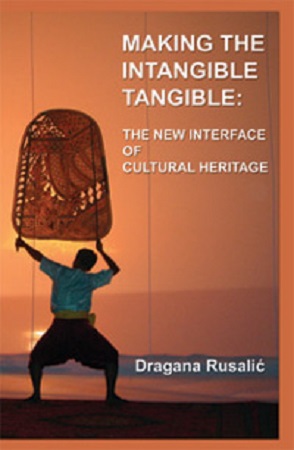
Making the Intangible Tangible: the new interface of cultural heritage
Rusalić, Dragana (2009) Making the Intangible Tangible: the new interface of cultural heritage, Institute of Etnography SASA (Serbia), 197 p.
“While working on this book, I was feeling as a kind of challenge to present the immaterial heritage in a world which is controlled so much by materials in museums. It looks as necessary to move back and to introduce the meanings, the importance


